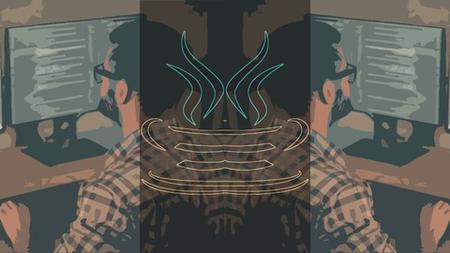English | MP4 | AVC 1280×720 | AAC 44KHz 2ch | 36 lectures (1h 47m) | 283 MB
Mastering Basics of JavaScript and Node.js: Best Practices for Solid Foundations in Client and Server Side Programming
“JavaScript and Node.js Best Practices – Programming Basics” is a comprehensive course designed to equip learners with fundamental skills and industry best practices in JavaScript and Node.js development. The course begins by laying a solid foundation in JavaScript, covering essential concepts such as variables, data types, operators, control flow, functions, and arrays. Through hands-on exercises and real-world examples, students gain proficiency in writing clean, efficient, and maintainable JavaScript code. As the course progresses, participants delve into Node.js, exploring its capabilities for server-side programming, asynchronous I/O, and building scalable network applications. Emphasis is placed on understanding Node.js event-driven architecture, handling callbacks, managing modules, and leveraging npm packages effectively. Throughout the course, students learn industry-standard coding practices, including error handling, debugging techniques, code optimization, and documentation. By mastering essential programming basics and best practices in JavaScript and Node.js, participants emerge equipped to develop robust web applications and backend services, ensuring their code is reliable, scalable, and maintainable. Whether beginners seeking to embark on a career in web development or experienced developers aiming to enhance their skills, this course provides a comprehensive foundation for harnessing the power of JavaScript and Node.js effectively. JavaScript is the primary language used in Node.js development. Node.js is essentially a runtime environment that allows you to run JavaScript code on the server-side, outside of a web browser. It provides various built-in modules and libraries that extend JavaScript’s capabilities to perform tasks such as file system operations, networking, and interacting with databases. With Node.js, you can build scalable and efficient server-side applications, APIs, web servers, and more, all using JavaScript. So, in short, JavaScript is not only possible but essential for Node.js development.
What you’ll learn
- JavaScript
- NodeJS
- Programming Basics
- Best Practices
Table of Contents
JavaScript and NodeJS Best Practices Programming Basics
1 Course Promotion and About This Course
2 JavaScript and Nodejs
3 Advantages
4 Disadvantages
5 VSCode and NodeJS
6 How to Install on Linux
7 Installation on Windows
8 JavaScripts to Download from Github
9 Variable Printing in Node
10 Variable Operation in Node
11 Temperature Conversion in JavaScript
12 Simple Interest Calculation in JavaScript
13 Countdown Timer in JavaScript
14 Random Number Generator in JavaScript
15 Palindrome Checker in JavaScript Convert Strings
16 Factorial Calculator in JavaScript Recursive Function
17 FizzBuzz Algorithm in JavaScript For Loop Plus If Else If Statement
18 Array Sum Calculator in JavaScript Array and For Loop Example
19 Email Validation in JavaScript Regular Expression Testing
20 Shopping Cart Total Calculator in JavaScript Array and Items Plus Properties
21 Password Strength Checker in JavaScript String Validation and Checking
22 Simple ToDo List App in JavaScript Arrays and Functions Push and Splice
23 Currency Converter in JavaScript Function and Object
24 Temp Converter in JS Function with 3 Parameters If Else Condition
25 Simple Calculator in JavaScript Multi Function Operation
26 Vowel Counter in JavaScript Match Char in String and Count
27 Countdown using While Loop in JavaScript
28 Countdown using DoWhile Loop in JavaScript
29 Data Type Checker in JavaScript
30 Day of the Week Identifier using Switch Statement in JavaScript
31 Array Operations in JavaScript
32 Object Operations in JavaScript
33 Asynchronous Operations with Async Await in JavaScript Communication Delay
34 Reading a File in Node
35 Storing Data in a File in Node
Resolve the captcha to access the links!
